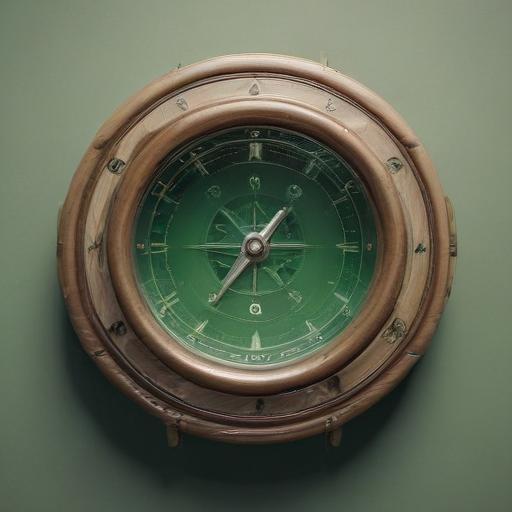For more than a century, the Bermuda Triangle has endured as one of the ocean’s most enduring myths. Yet science and official records point to a different story: the region’s dangers are maritime and meteorological, amplified by sensational reporting rather than supernatural forces.
The origins of the legend
The modern Bermuda Triangle narrative coalesced around a string of high-profile losses in the mid-20th century. One event, in December 1945, involved five U.S. Navy TBM Avenger torpedo bombers departing Fort Lauderdale for a routine training flight. They never returned. When a rescue TBM Mariner seaplane flew out to locate them, it exploded in midair, killing all 13 on board. These incidents helped seed the popular belief that the area between Florida, Bermuda, and Puerto Rico is a mysterious trap for ships and planes.
Statistical claims and public fascination often cite “more than 50 ships and 20 aircraft” reported missing over the past century. But the footprint of the Triangle in popular culture has long outweighed the body count of verifiable anomalies.
What the science says
– No greater danger than any other heavily traveled ocean region: Studies and major insurers have argued that the Bermuda Triangle shows no higher disappearance rate than similar stretches of sea. The Triangle’s traffic is a factor: busier waters, more vessels, and more opportunities for misnavigation or weather-related mishaps.
– Natural hazards explained: The Gulf Stream sweeps through the area, producing rapid changes in weather and difficult navigation. The region’s chain of Caribbean islands and shallow waters create navigation hazards. Before modern forecasting, storms and hurricanes traversed the area with little warning. In some cases, compass readings can drift toward true north rather than magnetic north, complicating efforts to stay on a planned course.
– Official stance: The U.S. Navy and Coast Guard have repeatedly stated that there is no supernatural force at work. The U.S. Board of Geographic Names does not recognize the Bermuda Triangle as an official geographic location, and it maintains no formal records for it.
– Flight 19, analyzed: The Flight 19 incident is often cited as the Triangle’s cornerstone tragedy. Investigations and later analyses suggest a combination of weather, difficult navigation, and human error. The squadron leader, the most experienced pilot in the group, faced instrument and navigation challenges that contributed to flying deeper into the open ocean rather than toward land.
Myths, legends, and enduring narratives
Early sensational coverage helped turn a string of accidents into a broader legend. Writers and later film and television works linked disappearances to aliens, underwater cities, or other fantastical explanations. Popular authors in the 1960s and 1970s helped convert occasional misfortunes into a narrative of danger and mystery. Such storytelling, reinforced by dramatic portrayals in media and entertainment, fostered a cultural aura that outlived the underlying data.
What about the more exotic theories?
Over the years, explanations such as magnetic anomalies, rogue waves, methane hydrate releases, or massive undersea landslides have been proposed. Most lack consistent evidence showing they occur with unusual frequency in the Triangle, and many were anchored to myth rather than verified incidents. The methane-hydrate theory, for example, fears a sudden release could sink ships or affect aircraft engines, but scientists note that the most significant such events happened tens of thousands of years ago—long before modern navigation.
New research adds a media-focused perspective
A recent scholarly look at how the Bermuda Triangle myth has endured highlights the role of media technology in shaping public perception. The study examines how print, radio, television, and, more recently, digital and social media have collaborated to transform unrelated incidents into a cohesive, sensational narrative. It argues that media convergence—where stories move across platforms—helps keep the legend alive, even as scientists and skeptics push for data-driven explanations. In short, the way stories are told can matter as much as the facts themselves, particularly in an era where engagement metrics influence what gets amplified.
Key takeaways for readers and travelers
– The region is busy and weather-prone: If you’re navigating the Atlantic, the Bermuda Triangle region represents a high-traffic, weather-volatile zone where careful planning and up-to-date forecasts remain essential.
– Expect scientific skepticism to persist: Official bodies and insurers generally treat the Triangle as an ordinary hazard zone, not a doorway to the supernatural.
– Media storytelling can shape belief: Sensational reporting and fictional portrayals have a long reach, but they don’t substitute for evidence-based explanations.
A hopeful note
The Bermuda Triangle story shows the power of science to explain mystery, and it highlights the importance of critical thinking in the media age. As forecasting, navigation technology, and safety protocols continue to improve, teams at sea and in the air are better equipped to handle the region’s hazards. In that light, the legacy of Flight 19 and other historical incidents can serve as a reminder to blend curiosity with caution—and to celebrate the successes of modern science in demystifying even the most enduring legends.
Bottom line
The Bermuda Triangle remains a cultural phenomenon more than a scientific anomaly. While dozens of disappearances have occurred in the region, they align with the realities of heavy traffic, variable weather, and navigational challenges—factors found in countless other busy sea lanes. The enduring legend is fueled by sensational storytelling and media dynamics, not an unusual concentration of mysterious forces. The real takeaway is simple: respect the sea, trust the science, and enjoy the ongoing conversation about how stories are created and spread.
